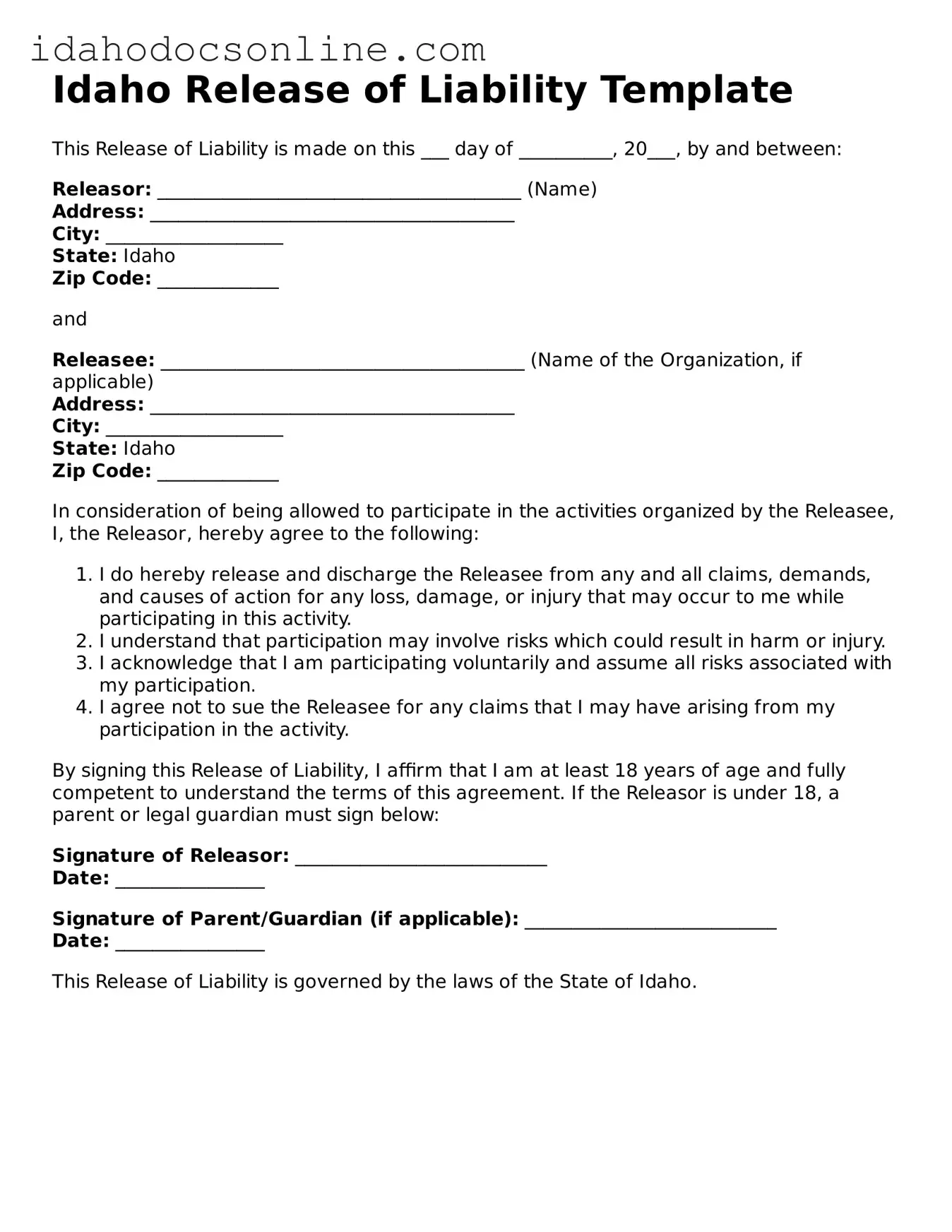Idaho Release of Liability Template
This Release of Liability is made on this ___ day of __________, 20___, by and between:
Releasor: _______________________________________ (Name)
Address: _______________________________________
City: ___________________
State: Idaho
Zip Code: _____________
and
Releasee: _______________________________________ (Name of the Organization, if applicable)
Address: _______________________________________
City: ___________________
State: Idaho
Zip Code: _____________
In consideration of being allowed to participate in the activities organized by the Releasee, I, the Releasor, hereby agree to the following:
- I do hereby release and discharge the Releasee from any and all claims, demands, and causes of action for any loss, damage, or injury that may occur to me while participating in this activity.
- I understand that participation may involve risks which could result in harm or injury.
- I acknowledge that I am participating voluntarily and assume all risks associated with my participation.
- I agree not to sue the Releasee for any claims that I may have arising from my participation in the activity.
By signing this Release of Liability, I affirm that I am at least 18 years of age and fully competent to understand the terms of this agreement. If the Releasor is under 18, a parent or legal guardian must sign below:
Signature of Releasor: ___________________________
Date: ________________
Signature of Parent/Guardian (if applicable): ___________________________
Date: ________________
This Release of Liability is governed by the laws of the State of Idaho.
